fashion's plan for the apocalypse
BOGO: buy one summer dress, get a melting planet absolutely free!!!
“At men’s fashion week in Paris, fans were among the hottest accessories” < that’s according to BoF, who also reported that many designers had taken extra steps to help guests deal with the heat as they arrived for shows last month: “cooling towelettes” for guests arriving at Hermès, water being handed out at the “particularly steamy” Grace Wales Bonner show.
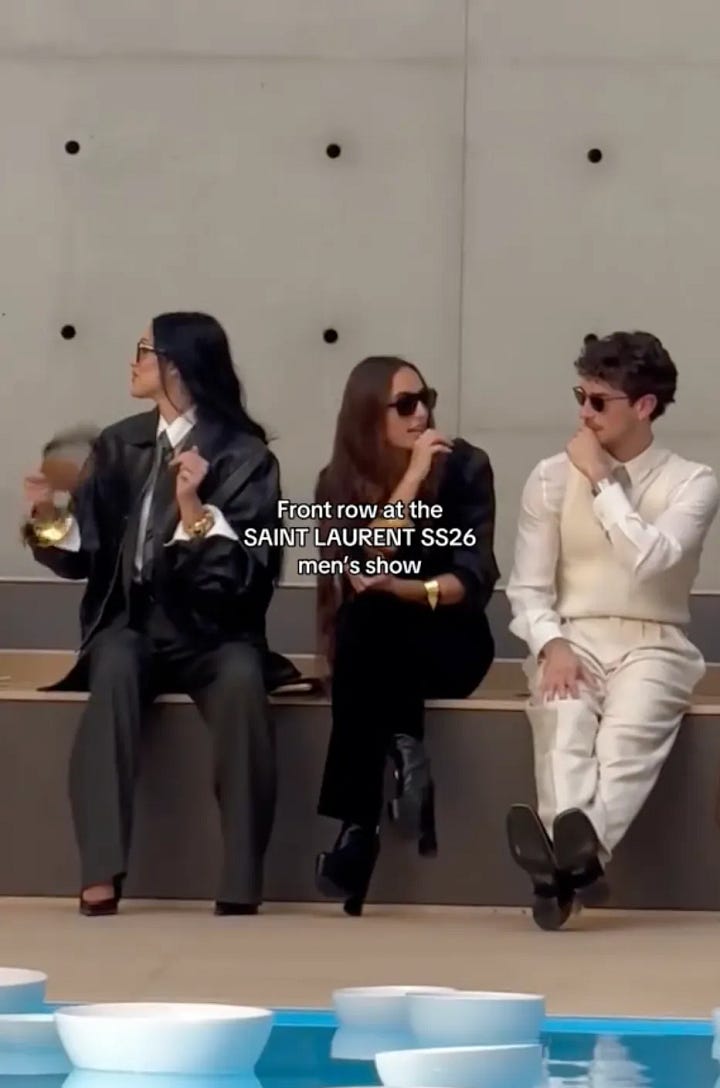
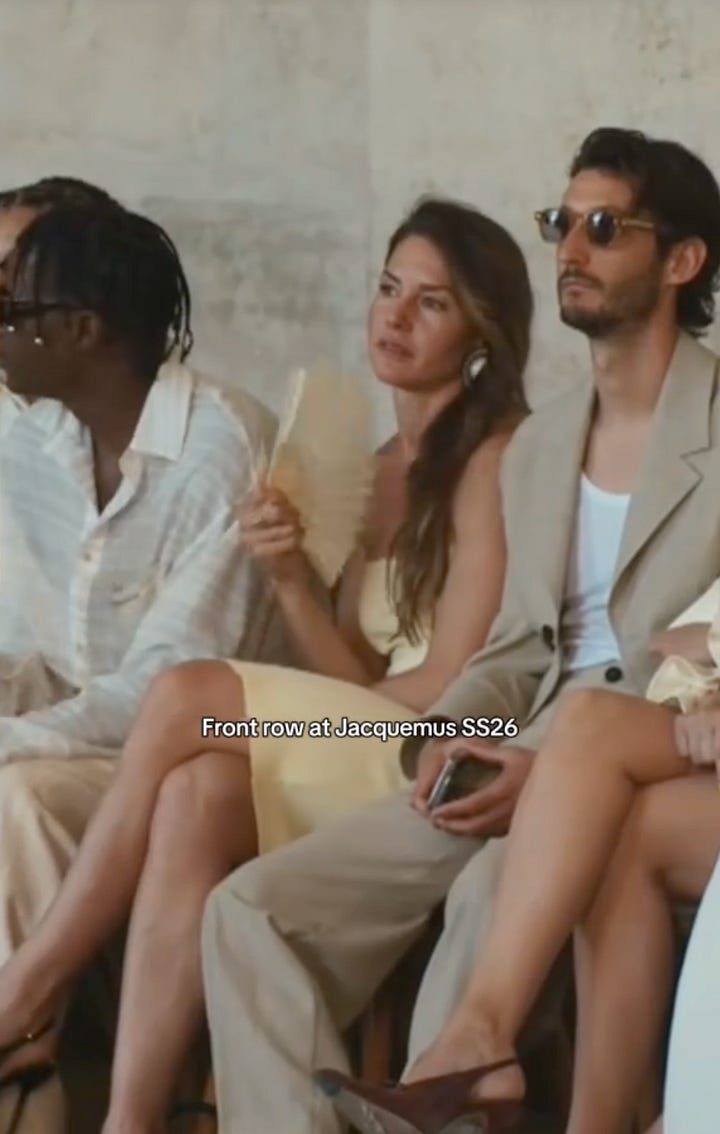
In the background of tiktok edits covering the Hermès show, you can see many guests desperately using their show invites as impromptu handfans as models clad in thick autumn fabrics stomp past. In fact, in almost every front row edit of almost every designer show there is someone wafting a fan as they take in the looks; many of them seemed deliberately styled to match the rest of the outfit. The internet was fixated on how cute Rihanna and Riot were at A$AP’s AWGE show, but the electric fan she clutched in every edit is what stuck out to me.
It was a different job entirely keeping the models cool in their leather, wool and winter jackets: I noticed many last minute make-up touchups across sweaty T-zones in behind the scenes videos. Backstage at Jonathan Anderson’ debut Dior show models, models laughed as they were dually-fanned by two assistants to control sweat stains, whilst some were less amused at the heat. “You guys hot?”, one fashion photographer asked two models backstage at Kidsuper, who were both clad in multiple layers from head to toe. “Yeah,” the one in a leather jacket and hoodie confirmed with a quick double nod, before the camera panned to the other model fully zipped up in a parka with an electric fan held to his face, his muffled, “sweating my ass off,” comment barely audible through fabric. “It’s, like, 90 degrees in here”, the photographer confirms.
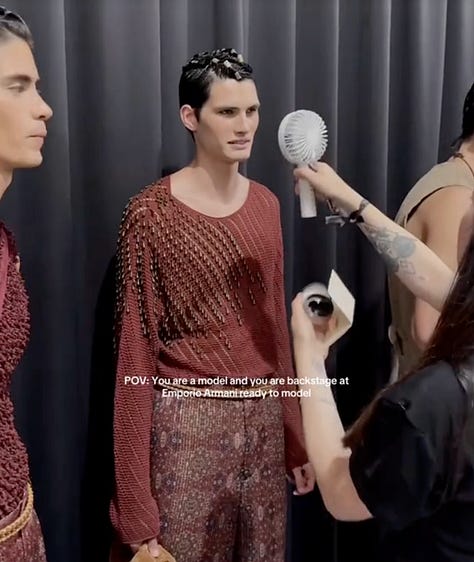
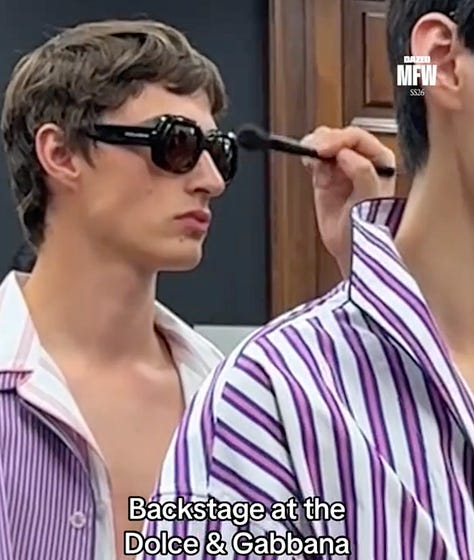
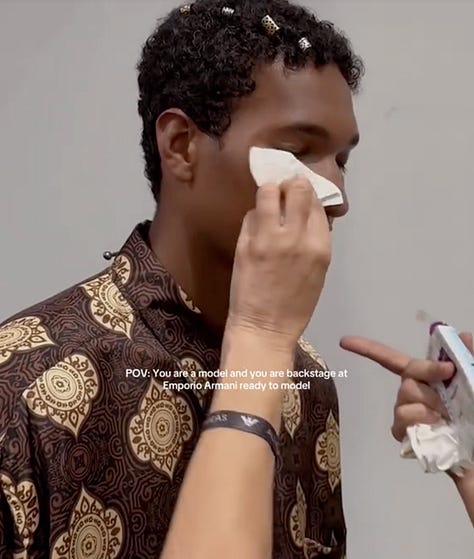
It looked like models at Rick Owens got off a little lighter. The designer took a somewhat radical approach by having his models dunk themselves in water mid catwalk - reportedly an “audacious act of baptism” meant as a metaphor for the designers work - but also an unexpected relief for the models swathed in so, so much leather.
The media loved Rick Owens’ theatrical display; reviews i’ve seen are so focused on examining the clothes and the metaphors and the legacy they don’t seem to even mention the freak weather that almost drowned the city before it could take place. The spectacle of models submerging themselves in the fountain seemed somewhat tone-deaf considering the almost biblical flooding that swept the capital during the week, already dubbed by some as “the great Paris flood”.
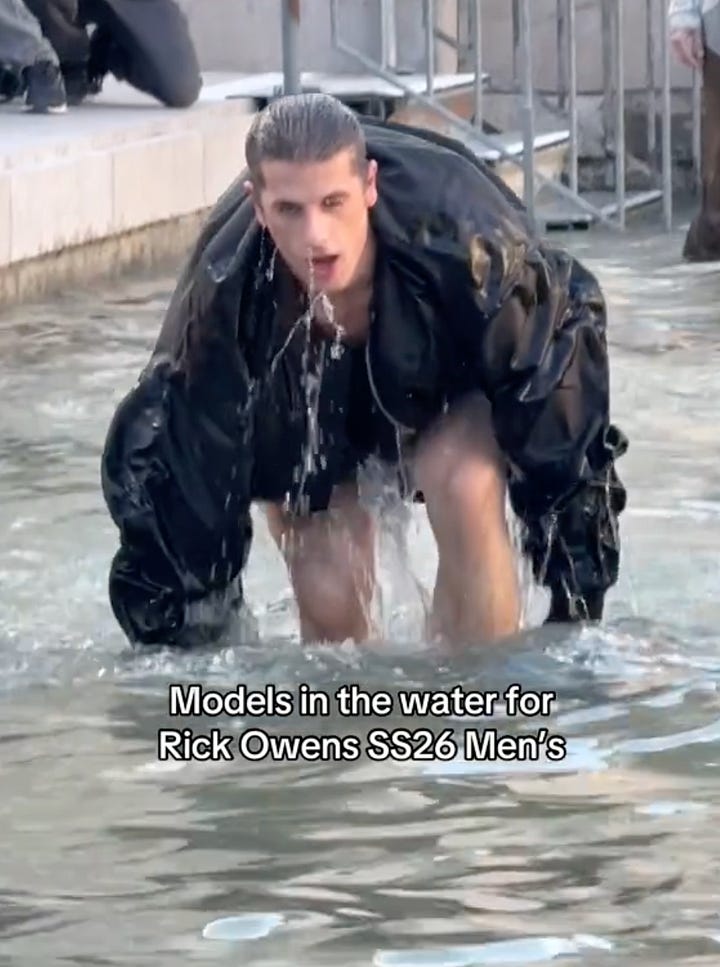

As temps swelled across Europe, as flash floods took place across the globe and more headlines declare major disasters and people missing or gravely impacted, brands were walking new collections down the same streets submerged in water not 24 hours earlier. Paris was not the first, but maybe the most obvious example of fashion week contending with the rise in extreme weather events, and the fact fashion would rather dunk their heads in a fountain then acknowledge their part to play in it all is evident.
Across the world, in the decidedly less glamorous locations fashion relies on to create their clothes, garment factories are also buckling under extreme heat. China, Vietnam, Bangladesh and many other supplier countries have experienced sizzling heatwaves this year. Earlier this summer, a viral LinkedIn post from Thivya Rakini shared that she fainted two hours into visiting a factory in Dindigul, India, where she was “meeting women garment workers suffering from heat rashes, dizzy spells, and extreme exhaustion.” A photo of a thermometer proved it was 38.6°C at the time, but women inside were “working for nine hours a day, under intense production pressure, wrapped in synthetic uniforms.”
Rakini spoke to managers at the factory about the conditions, and asked: “can’t you at least give these women some lemon juice once a day?”. Reportedly they said, “We’ll have to think about it. Even that needs approvals. It may take weeks.”
WEEKS???????????
Do you think it took weeks for brands to approve models using fans backstage at Paris SS26, or decide they should give out water bottles to guests as similar temperatures hit Europe??
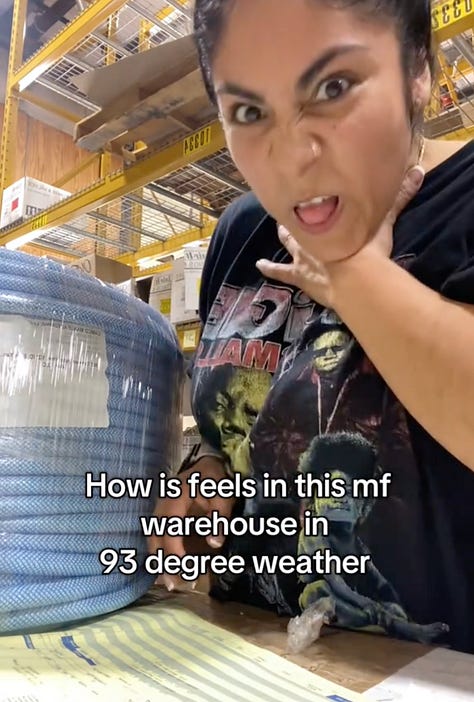


Men’s SS26 proved brands can quickly deal with rising heat and uncomfortable conditions when they want to; when the event is important enough, or the guests are wealthy / recognisable / respected enough. Handing out moist towelettes to the front row but ignoring the sweltering heat your garment workers have been increasingly facing for years is, to put it in fashion terms, so last season.
The question “who will pay for sustainability?” has been hotly debated in fashion circles for years, but as things *literally* heat up and that question becomes less of a hypothetical and more of an everyday panic to the latest record-breaking weather event, brands are remaining stubborn about the role they should play. A recent report on fashion’s climate efforts shows brands are ignoring the impact faced by garment workers, and addressing climate mitigation policies for their factories at a slower rate compared to their other sustainability progress. As flooding, extreme heat, and an increase in diseases are already a reality, fashion still refuses to invest or put policies in place to help those most affected in their supply chains.
Let alone the back breaking efforts fashion goes to to dodge responsibility for the extreme weather becoming more common. Overproduction, polyester, AI, aggressive marketing, planned obsolescence, dirty energy, trend culture - every step of fashion’s existence is fuelling the climate crisis, and then selling the results back to you in the form of heatwave edits.
In the BoF article I mentioned, Sarah Kent warns that fashion is viewing climate change purely from a numbers angle, and have currently concluded it doesn’t pose enough of a looming threat to profits for them to act:
“Kering, Hermès and Richemont all concluded their current exposure to climate-related risks had no significant material impact. Adidas declared its business is sufficiently resilient for the “foreseeable future.” Zara-owner Inditex sees “relatively limited” financial impact from physical climate risks within the next five years.”
- ‘The World Is Getting Warmer. Fashion Thinks It Can Handle the Heat’ by Sarah Kent
So, it looks like we may be waiting a while for fashion to wake up to reality, and it’s likely instead of any tangible action we’ll just see more emergency weather plans ready to go at fashion months in the future 🤷🏻♀️
Until next time,
Katie x
p.s. If you see any news / tiktok edits of brands dealing with the weather at fashion shows pls tag me!! (@katieerobinson_ on tiktok & insta)





I absolutely love the paradox you paint so clearly here. The hypocrisy, the unaccountability, the ignorance of the fashion industry. Fashion brands are willing to implement some small steps towards reduced impact, but only if it doesn’t cut into their profits! Because an unlivable planet is still better than losing profit, right?
😅